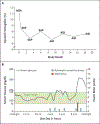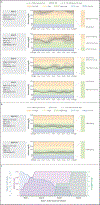Digital Technology for Diabetes
- PMID: 38048189
- PMCID: PMC12333919
- DOI: 10.1056/NEJMra2215899
Digital Technology for Diabetes
Abstract
This review article presents three true-life clinical vignettes that illustrate how digital health technology can aid providers caring for patients with diabetes. Specific information that would identify real patients was removed or altered. Each vignette is followed by a discussion of how these methods were used in the care of the patient.
Figures




Comment in
-
Digital Technology for Diabetes.N Engl J Med. 2024 Mar 7;390(10):962. doi: 10.1056/NEJMc2315000. N Engl J Med. 2024. PMID: 38446691 No abstract available.
-
Digital Technology for Diabetes.N Engl J Med. 2024 Mar 7;390(10):962-963. doi: 10.1056/NEJMc2315000. N Engl J Med. 2024. PMID: 38446692 No abstract available.
-
Digital Technology for Diabetes.N Engl J Med. 2024 Mar 7;390(10):963. doi: 10.1056/NEJMc2315000. N Engl J Med. 2024. PMID: 38446693 No abstract available.
-
Digital Technology for Diabetes. Reply.N Engl J Med. 2024 Mar 7;390(10):963-964. doi: 10.1056/NEJMc2315000. N Engl J Med. 2024. PMID: 38446694 No abstract available.
References
-
- The Diabetes Control and Complications Trial Research Group. The effect of intensive treatment of diabetes on the development and progression of long-term complications in insulin-dependent diabetes mellitus. N Engl J Med 1993;329: 977–86. - PubMed
Publication types
MeSH terms
Grants and funding
LinkOut - more resources
Full Text Sources
Medical
